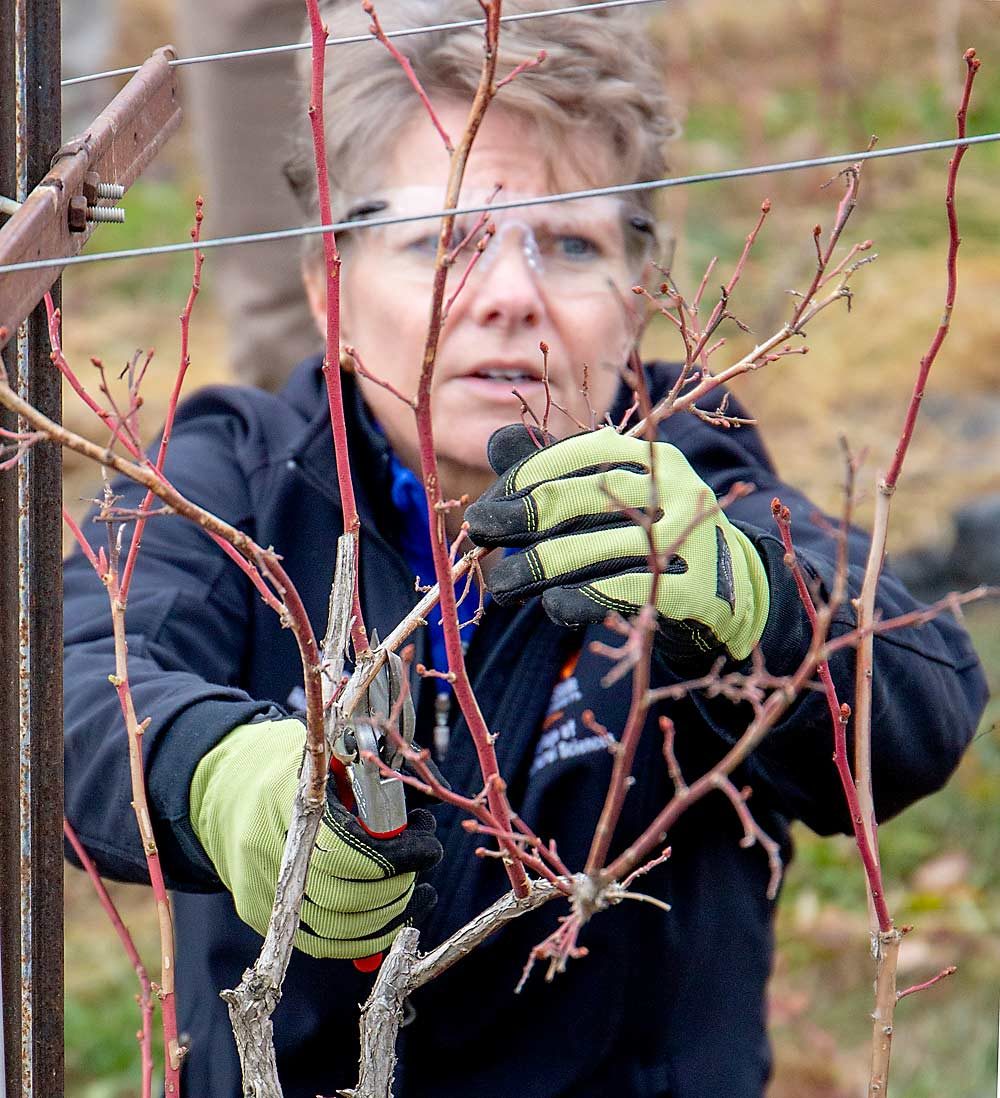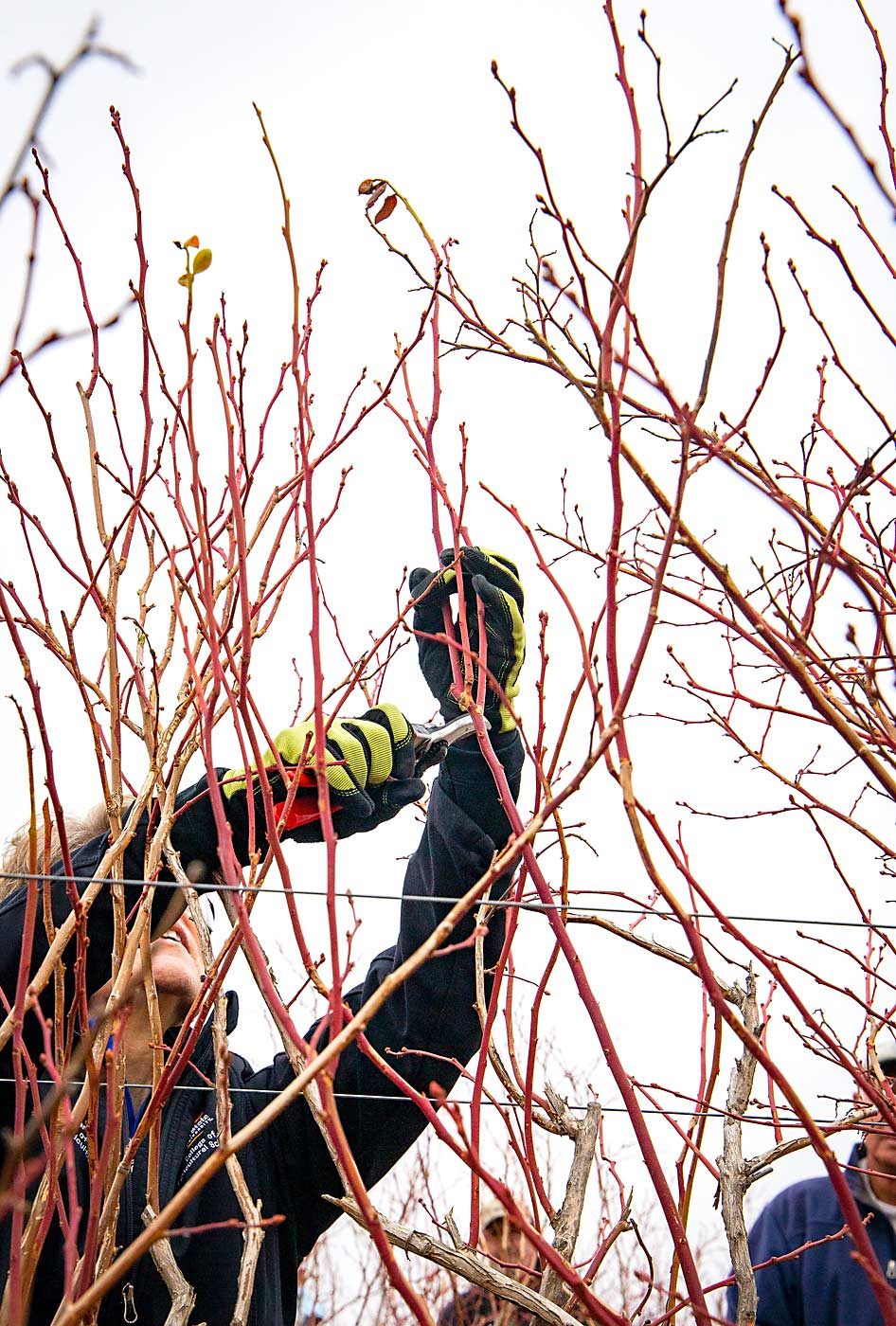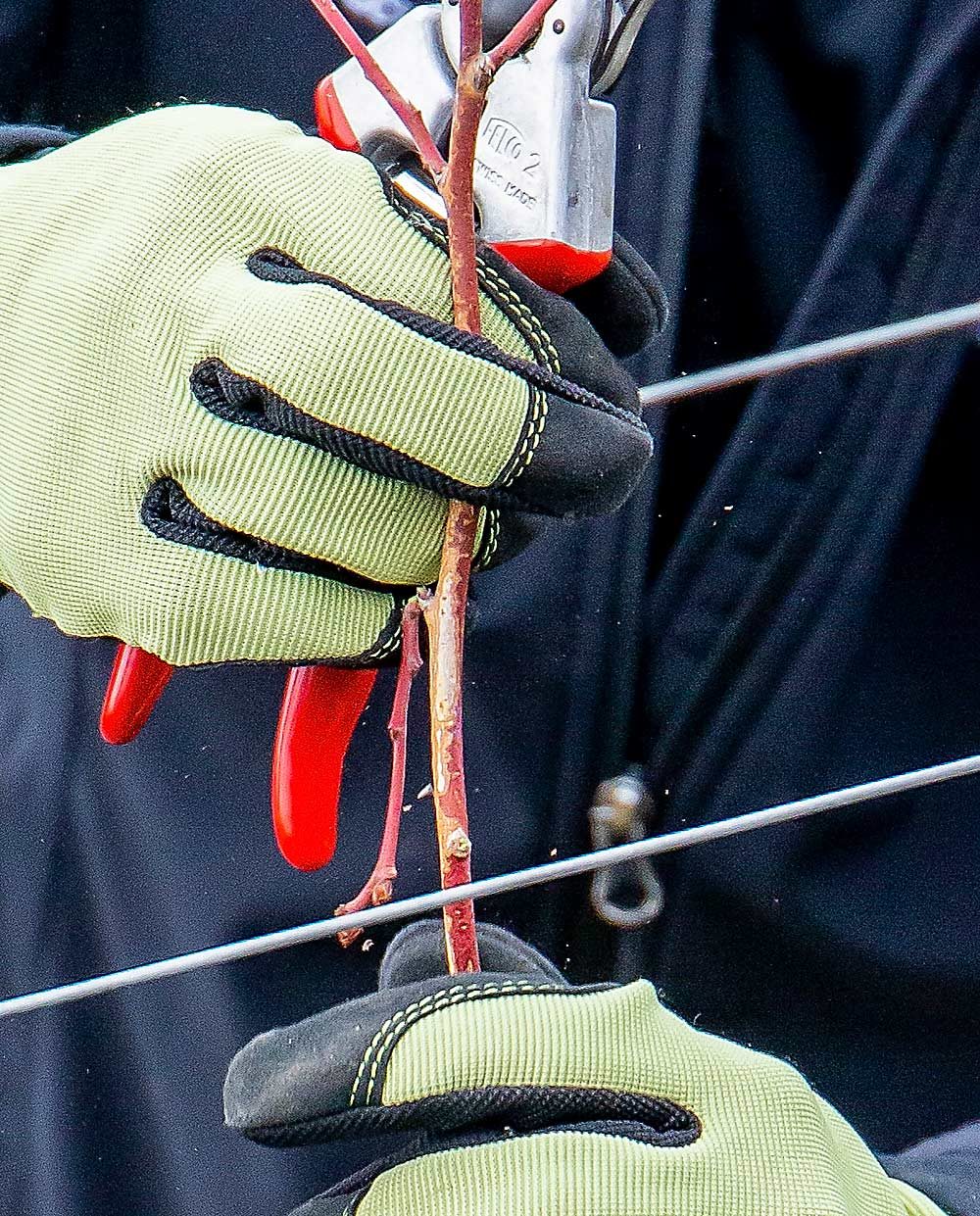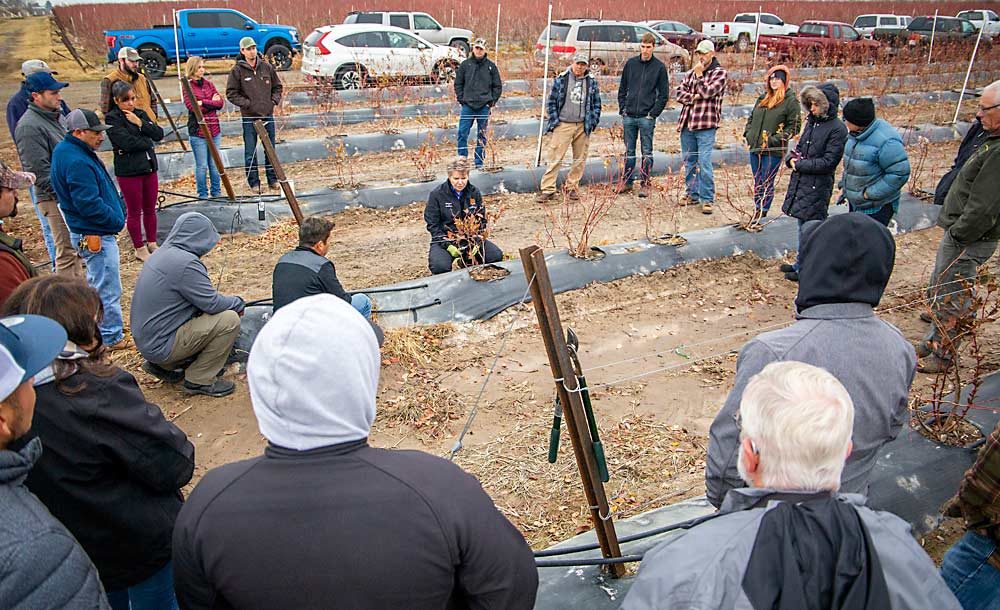
Blueberries require constant renewal growth of vigorous, 1-year-old wood to sustainably produce good berries year-to-year. So, when winter pruning, growers should look beyond just the next summer crop and envision what wood will give them good growth — key to having flower buds and high-quality fruit the following summer.
That’s the recommendation from Bernadine Strik, Oregon State University horticulture professor and berry crop extension specialist at OSU’s North Willamette Research and Extension Center.
In other words: Prune hard, and prune aggressively.
Pruning hard does reduce yield, but pruning too little reduces shoot growth and increases competition among fruit, which reduces berry size, diminishes handpicking efficiency and delays harvest. Meanwhile, having too few shoots or shoots too short will leave little quality growth for the following year’s crop.
Strik honed her pruning approach over 35 years of working in berry crops and, in 2017, completed a 10-year, $890,000 research project on best practices for growing organic blueberries in the Northwest. She offers online classes in blueberry production through Oregon State University.

Oregon and Washington are the two largest blueberry production states in the United States, collectively producing between 40 percent and 50 percent of the country’s crop in 2018, according to the U.S. Department of Agriculture.
Growers may worry about overpruning, which can warrant expensive corrective measures, but Strik said she sees growers underprune far more often.
When winter pruning, remove the short, skinny, “twiggy” laterals and sections of unproductive growth, Strik told growers at a November pruning workshop in Prosser, Washington. Most of the growers who attended were from Eastern Washington.
Leave thicker and healthier laterals that are between 6 inches and 18 inches long with flower buds near the end. If a bush is stressed, or if it was insufficiently pruned the year before, prune it even harder, removing dead or diseased wood first.
“If we don’t prune well, or if a plant is stressed for some other reason” then we have to prune it extremely hard to encourage vegetative growth, she said. Pruners sometimes have a tendency to leave a sick-looking plant alone, but “that’s the worst thing you can do,” she said.

Here are a few other key pruning tips from Strik:
—Leave no more than five or six strong fruiting laterals on a 2-year-old cane.
—Prune to open up the interior of the bush to sunlight and to remove low growth, forcing the bush upright.
—Thin to the most vigorous three or four whips (1-year-old canes) coming from the base. Remove older, unproductive canes entirely.
—Think about the picker or the machine harvester. Prune to a good picking height.
—Don’t be afraid to use your hand to strip and break away short, twiggy shoots.
—Don’t hedge postharvest. That may work in the climates in Georgia and Florida, but in the Northwest, it will reduce yields and cause “witches’ broom,” a structure of short twiggy growth. The Northwest growing season is too short for summer hedging.
—Experiment. Flag a few bushes and try different severities of pruning on them, leaving some bushes as control, and take note of their growth and production the following year or years.

Adam Waliser of Spokane, Washington, has attended several of Strik’s workshops over the years and gets better at finding the pruning severity sweet spot each year, he said. After first hearing her preach about aggressive pruning, he tried it on his 32 acres and thought it was too much. The next year, he finished pruning wishing he had pruned more.
“It’s one of the difficulties at farming; you only get one chance a year,” he said.
He believes he’s got it down now. In November, he brought three of his full-time employees with him to Strik’s workshop.
Keith Oliver, a manager for Olsen Bros. Ranches, recalls the first time Strik visited his freshly pruned, Prosser-area blueberry field the first winter after it was planted in the spring of 2005. She recommended he send his crews back through the plot to reprune, removing twice as much vegetation.
He did — and liked what he saw. He has since compared his fields favorably to other lightly pruned plots, where the bush health seemed to wane over time.

“I learned that lesson early, it’s better to be aggressive,” Oliver said. He likens it to exercise. Pruning a plant invigorates it the way exercise invigorates people.
His crews do not count buds, however, as that would take too long, he said. Pruners are paid piece-rate per bush. Through experience, his managers have simply learned what a well-pruned bush should look like and they communicate that to pruners.
Yes, Oliver said. Pruning is a science.
“But sometimes the artwork is important, too,” he said. •
—by Ross Courtney
Related:
—OSU research shows best techniques for organic blueberries
—Head start on better berries






Great information, but it’s February now. Is it too late to prune for this summer?
Great question, Laurie. We asked Bernadine Strik and here’s what she said: “If bushes haven’t been pruned yet or not well, then you can prune after bud break. Expect some loss of flower buds or clusters as you pull wood out of the bush when pruning.”
Hope that helps.
I bought 3 15 yr old O’Neal blueberry bushes from a farm that was closing. In March 2021. I transplanted them into my yard. It’s now May and I just found they should have pruned this past winter. They are about 4-5 ft tall. They have already flowered and there’s tiny blueberries on it. I live in San Rafael, Ca. The Bay Area.
What do I do?
Chris
Thanks for the question Chris. I reached out to the expert herself, Bernadine Strik of OSU. Here is her suggestion:
“This person has a southern highbush blueberry cultivar (‘O’Neal’). This type of blueberry is adapted to warmer regions – not grown here. So rather than doing most of the pruning in winter, a lot of the pruning on these cultivars is done right after fruit harvest.”
She also suggests viewing her pruning courses at: https://workspace.oregonstate.edu/course/pruning-series
We pruned heavily several bushes on our acre field two years ago. This year none of the canes have any buds on the bushes we took down completely. The field is well over 50 years old. Do we leave some canes for the rigor of the bush or take them all out again.
Hey there Evelyn,
I thought your question was so good I reached out Lisa DeVetter, the blueberry extension specialist from WSU Mt. Vernon. Here is her answer:
It sounds like you may have bushes that are still in a vegetative growth phase after heavy pruning and the canopy is still re-establishing itself, thus not forming any fruiting buds. However, there could be other factors at play (perhaps an underlying factor that motivated the heavy pruning?). To get a more robust response, I suggest contacting your local area Extension fruit/berry crop specialist and present them with photos to aid in providing you with a recommendation.”